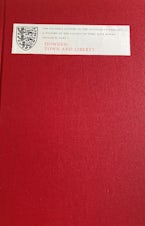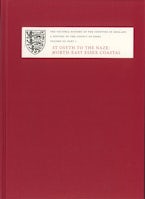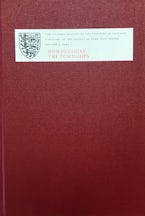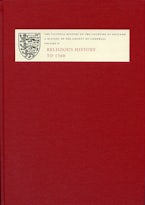
→
Recommend to library
Title Details
429 Pages
30.5 x 20.8 cm
8 colour, 82 b/w, 26 line illus.
Series: Victoria County History
Imprint: Victoria County History
A History of the County of Oxford
XIX: Wychwood Forest and Environs
- Description
- Contents
- Author
- Reviews
Authoritative account of villages on the edge of the Cotswolds.
Until its partial clearance in the 1850s Wychwood forest, set in an undulating landscape on the edge of the Cotswolds, was one of the great royal forests of England, comparable with Savernake, Rockingham, or Whittlewood. This volume explores the history of the forest itself and of a dozen surrounding villages, of which Shipton-under-Wychwood was the centre of a large Anglo-Saxon royal estate and minster parish stretching across the area. Several villages were shaped by early woodland clearance, and most depended on the forest to varying degrees, supplementing traditional sheep-corn farming and small-scale industries such as pottery-making and quarrying. Neighbouring Cornbury park is well known for its nationally important 17th-century mansion house, and a slightly later country house survives at Bruern near the Gloucestershire border, on the site of a Cistercian abbey founded in 1147. Ascott-under-Wychwoodacquired national notoriety in 1873 as home of the so-called "Ascott Martyrs", reflecting local agrarian difficulties.
Until its partial clearance in the 1850s Wychwood forest, set in an undulating landscape on the edge of the Cotswolds, was one of the great royal forests of England, comparable with Savernake, Rockingham, or Whittlewood. This volume explores the history of the forest itself and of a dozen surrounding villages, of which Shipton-under-Wychwood was the centre of a large Anglo-Saxon royal estate and minster parish stretching across the area. Several villages were shaped by early woodland clearance, and most depended on the forest to varying degrees, supplementing traditional sheep-corn farming and small-scale industries such as pottery-making and quarrying. Neighbouring Cornbury park is well known for its nationally important 17th-century mansion house, and a slightly later country house survives at Bruern near the Gloucestershire border, on the site of a Cistercian abbey founded in 1147. Ascott-under-Wychwoodacquired national notoriety in 1873 as home of the so-called "Ascott Martyrs", reflecting local agrarian difficulties.
Foreword and Acknowledgements
Wychwood Forest and Environs: An Overview
Shipton-Under-Wychwood and Langley
Ascott-under-Wychwood
Leafield
Lyneham
Milton-under-Wychwood
Ramsden
Wychwood Forest and Cornbury Park
Bruern
Fifield
Idbury (including Bould and Foscott)
Abbreviations, Sources, Select Glossary
Wychwood Forest and Environs: An Overview
Shipton-Under-Wychwood and Langley
Ascott-under-Wychwood
Leafield
Lyneham
Milton-under-Wychwood
Ramsden
Wychwood Forest and Cornbury Park
Bruern
Fifield
Idbury (including Bould and Foscott)
Abbreviations, Sources, Select Glossary
"For those interested in medieval and later forest and woodland history - this is a rich collection; it is also a rich quarry for detail on the development and range of settlement types in such areas.
All told, this is a volume of the highest standard; all associated with it should feel great pride." MEDIEVAL SETTLEMENT RESEARCH GROUP
"This latest Oxfordshire VCH volume expresses the far more thorough assessment of landscape and social history that is now characteristic of the Victoria County Histories. Moreover, as well as being a rich repository of local-historical detail, the information provided makes for a really fascinating read." Oxoniensia
Hardcover
9781904356516
August 2019
$140.00 / £95.00
Title Details
429 Pages
3.05 x 2.08 cm
8 colour, 82 b/w, 26 line illus.
Series: Victoria County History
Imprint: Victoria County History
















